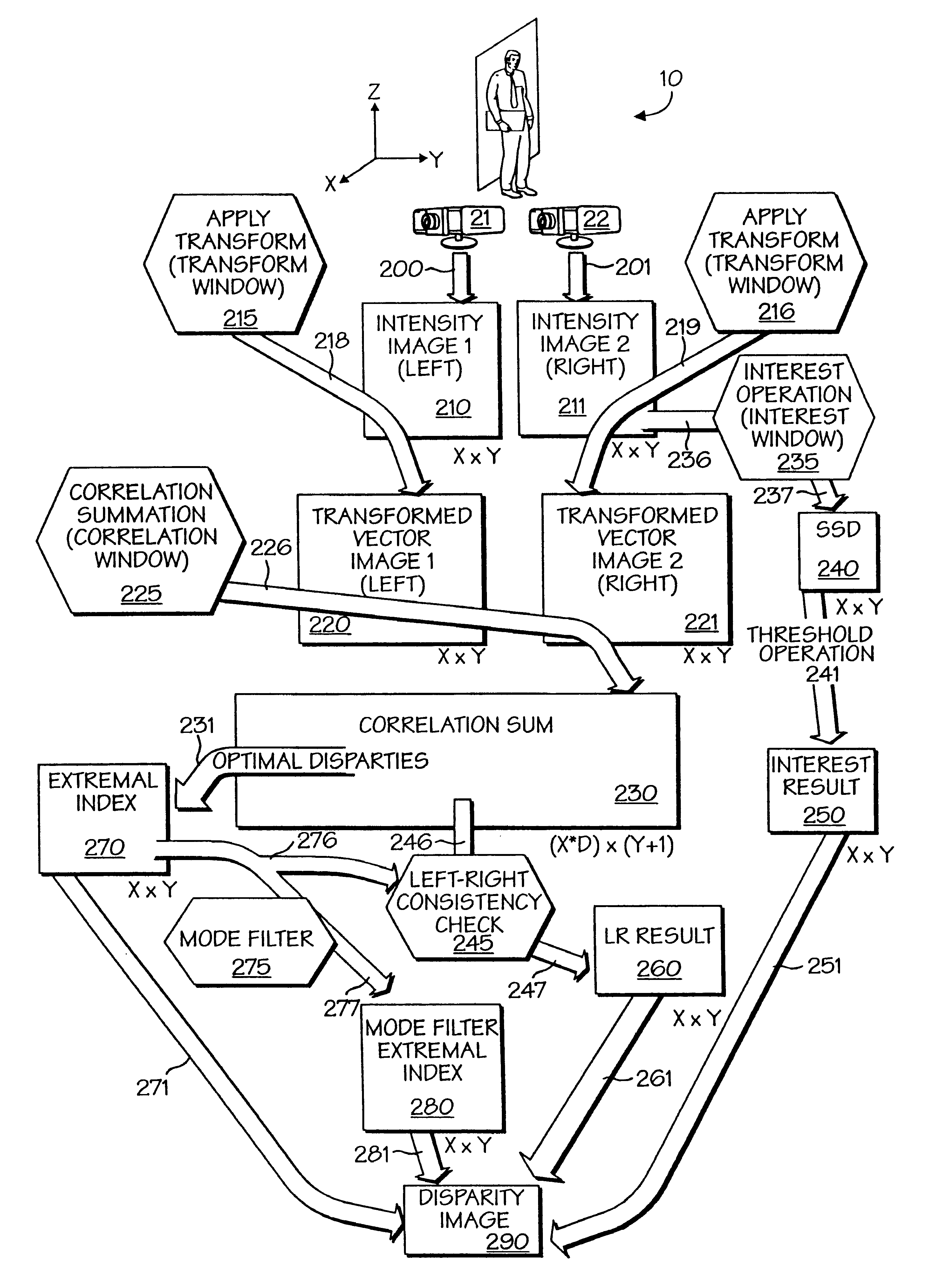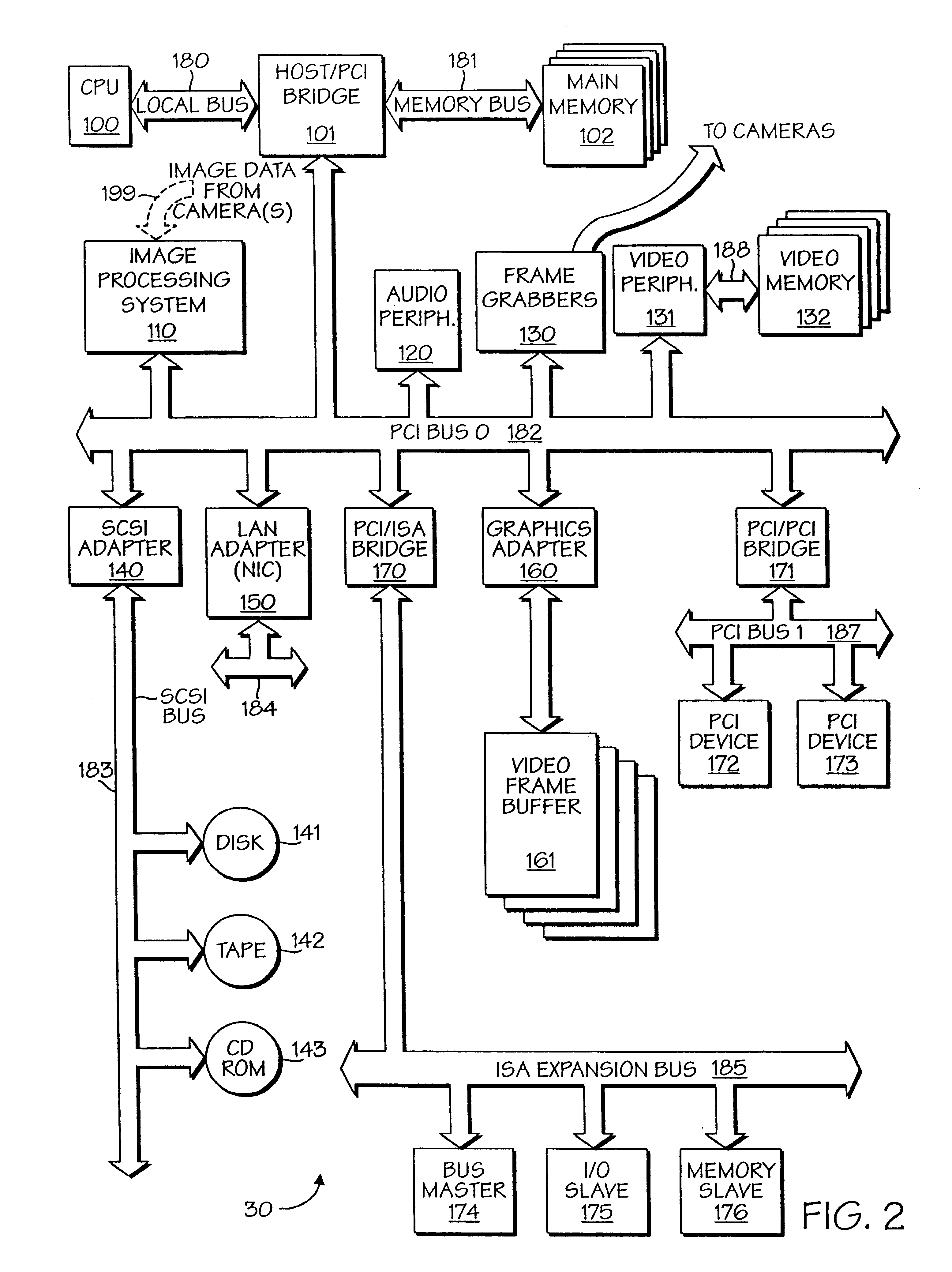Data processing system and method
a data processing system and data processing technology, applied in the field of data processing, can solve the problems of inability to achieve simple pixel-by-pixel comparison, application may be greatly complicated, and cannot be achieved through simple pixel-matching
- Summary
- Abstract
- Description
- Claims
- Application Information
AI Technical Summary
Benefits of technology
Problems solved by technology
Method used
Image
Examples
Embodiment Construction
The mode filter selects disparities based on population analysis. Every optimal disparity stored in the extremal index array associated with an image element is examined within a mode filter window. The optimal disparities in the extremal index array were previously determined in MAIN. Typically, the optimal disparity values within a window or neighborhood of an image element should be fairly uniform for a single computation of the disparity image. These particular disparity values may vary from computation to computation, especially if the object in the scene itself is somewhat dynamic and changing. The disparity with the greatest count within the mode filter window of the reference image element is selected as the disparity for that image element and stored in the MF extremal index array. This negates the impact that a stray erroneously determined disparity value may have for a given image element. For example, for a 7.times.7 window, the optimal disparities in the window associat...
PUM
 Login to View More
Login to View More Abstract
Description
Claims
Application Information
 Login to View More
Login to View More - R&D
- Intellectual Property
- Life Sciences
- Materials
- Tech Scout
- Unparalleled Data Quality
- Higher Quality Content
- 60% Fewer Hallucinations
Browse by: Latest US Patents, China's latest patents, Technical Efficacy Thesaurus, Application Domain, Technology Topic, Popular Technical Reports.
© 2025 PatSnap. All rights reserved.Legal|Privacy policy|Modern Slavery Act Transparency Statement|Sitemap|About US| Contact US: help@patsnap.com



